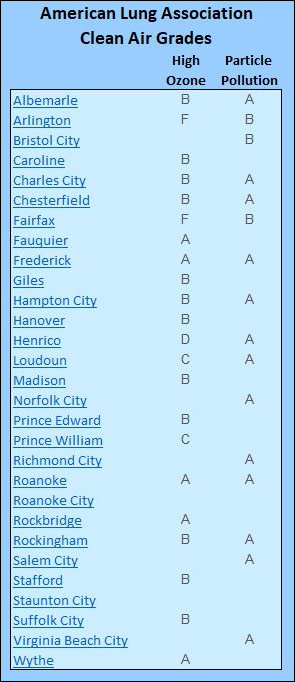On the subject of the competitiveness of large versus small metros (see previous post), one metric for gauging the quality of life is air pollution. All other things being equal, people would prefer to live in places with clean air than places with dirty air. Ozone remains a problem in Arlington, Fairfax and Henrico Counties, according to the just-published American Lung Association “State of the Air” report. But Virginia localities rate pretty well for particle pollution.
I’m not sure how heavily “clean air” weighs in peoples’ minds compared to other factors such as employment opportunities, housing costs, traffic congestion and the like. It’s not as if the air in Fairfax and Arlington, which rate F for ozone, is remotely as noxious as that of Beijing or Kolkota. Once air quality reaches a tolerable level, people may not place the same value on incremental gains. I don’t recall anyone ever citing air quality as a reason to live in one metro over another. Still, clean air is a factor, even if a small one.


Leave a Reply
You must be logged in to post a comment.